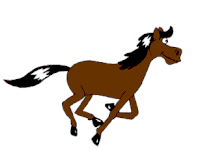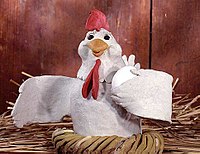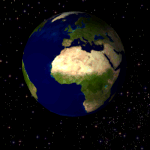
Hello again, Jalo here, how are yours? I hope you are fine..... In the part number 1 of this tutorial we saw conceptualization and modeling and we spoke of the important thing that it is, to prepare correct modeling, that soon was animated, then being started off to be anticipated that we mentioned before, the idea concept and modeled and now, we passed to rigging and skinning....
It is very important that we have think well, that type of structure and movements to the character... like the face expressions. He is important to know this well since on the basis of the movements that we want that it does bob, beginning to draw some structures and part of the system of rigging is to another good bigging.

Wath is rigging? .. for that you do not know it, summarizing it it is the structure of the body that goes to cause that our character move.... like our body. We have bones and these bones move on the basis of muscles... in this case the animator is the muscle of those bone to moves.


And skinning is the skin that is going to surround to the bones... in truth the skin is modeled which we did previously and the in fact this serious system that helped to deform the modeling one of the character, like a language says to the structure of rigging something as well as that this between means of rigging and modeled... the method is skinning....


Rigging....
We began with rigging of the Spine. I like to begin by this part... I have to go step by step solving the difficulties..... (they consider that this rigging is probable that it works for 70% of the takings that are needed and that of insurance there are to construct some others for realy you need specify scenes....) The Spine is a very important point at the time of creating animation... and when an animator tries to give him life to the character this must respond correctly and not to have movements rare, are several forms to do rigging for a Spine but I am going to tell the one them that uses...for Sideshow Bob.
The used commands in this character in rigging are hierarchy (Link) constraints, reaction, wirring, and try to visualize it in your minds, like a structure to create.
We have a pile of bones and these we are going to control to move it them by means of helpers or ui to parameter controlers, all of them to create dependencies of objects for soon is but natural and easy at the time of animating it....
Start to draw to 4 bones for the Spine which are going to control by 3 helpers visible for the animator. And other that will be for the Riggerman and a line spline with 5 vertex that when applying to them modif. Controler// spline IK to controler// with Link option is not the base to begin.

After creating 4 to helper that they above helped us to to the dependency of movement between the vertebrae, when we move those of down and vice versa... this dependency is created with position constraints, creating a progressive movement, example... a 10 movement that if first and the last chain moves 2.... Those of means are what they have position contraint.


Now the easy part je.... Link the part that has the dependency to link the 3 IK controls of spline and next helpers that also to ik control corresponding to its height in the Spine.

The idea is to create dependencies of movements this is not the solution for all the character is a possible one for this. The important thing is that they understand the process that is due to create and on the basis of this one it can be creating new riggings for situations in which one must solve the diverse situations that appear resolute the Spine Once, we must begin on the part of another one rigg that is the one of the leg and feet....
a: Similar as I constructed the Spine with respect to bones we created the bones necessary to define the structure that is going them to move, and this is defined applying to a HI IK solve... becouse is the system that more good react for hierachys complex and are quite light in calculations to solve them in simple move within 3dmax.
b: Next we pass to the foot, and adding some bones in the right place of pivots, we return to put HI IK solve.


Once defined the structure, we used the same logic.... Objects to helper that to serve to us as help to facilitate the movements.

This hierachy is important because by means of Parameter Editor of max we are going to construct spinners that by means of reactrions we are going to control to make the movement very easy of the feet.
















 With
With 





